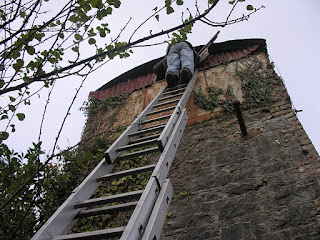Over the past few years, around this time of year, a number of young Barn Owls have been reported to us, seemingly injured or otherwise in distress. It seems that a small number of owlets leave the nest a little too soon, and are sometimes unable to return to the nest to be fed. In other cases, young birds have been found in difficulty some distance from the nest. Either way, each September, one or two owl chicks are reported which, rather than being injured, are actually undernourished and often critically underweight. This seems to be related to the birds being unable to feed themselves, or of poor weather occurring just at the point when they have left the nest to become independent. Three examples are shown below.

To see a Barn Owl in daylight in Ireland is remarkable, but this bird also shows large areas of downy white feathers still on the body. It is barely able to fly and it seems was blown off its high chimney nest and was unable to return. It would certainly have died without human intervention, but was successfully returned to the nest the following morning. Co. Kerry, 2009 (Photo: Eric Dempsey).
Another owl in daylight, this time near Kilflyn in Co. Kerry in autumn 2010. The bird being out in daylight, wings drooped, a slightly disheveled look, and being so tame, would all indicate that this bird is in serious trouble. It is possible it could have been poisoned, though most likely it is a young bird which was unable to find food. Its fate is unknown (Photo: with kind permission, Karen Davison).
This unfortunate young owl was only out of the nest two weeks or so when it was handed in, in a seriously weakened condition after being been picked up from the ground just 50 m from the nest in a chimney of a two-story farmhouse. This was after a period of prolonged, heavy rain over three days in early September, which probably meant it couldn't hunt. It weighed only 220 grammes instead of a more typical 280, and despite much attention, died the following morning (Photo: M.O'Clery).
If you do come across an owl in a weakened condition, do let us know. It takes considerable care and expertise to nurse a badly undernourished bird back to health. Unfortunately, a few birds succumb each year, and with the wet weather continuing, it is possible that you might see or hear of one.











































